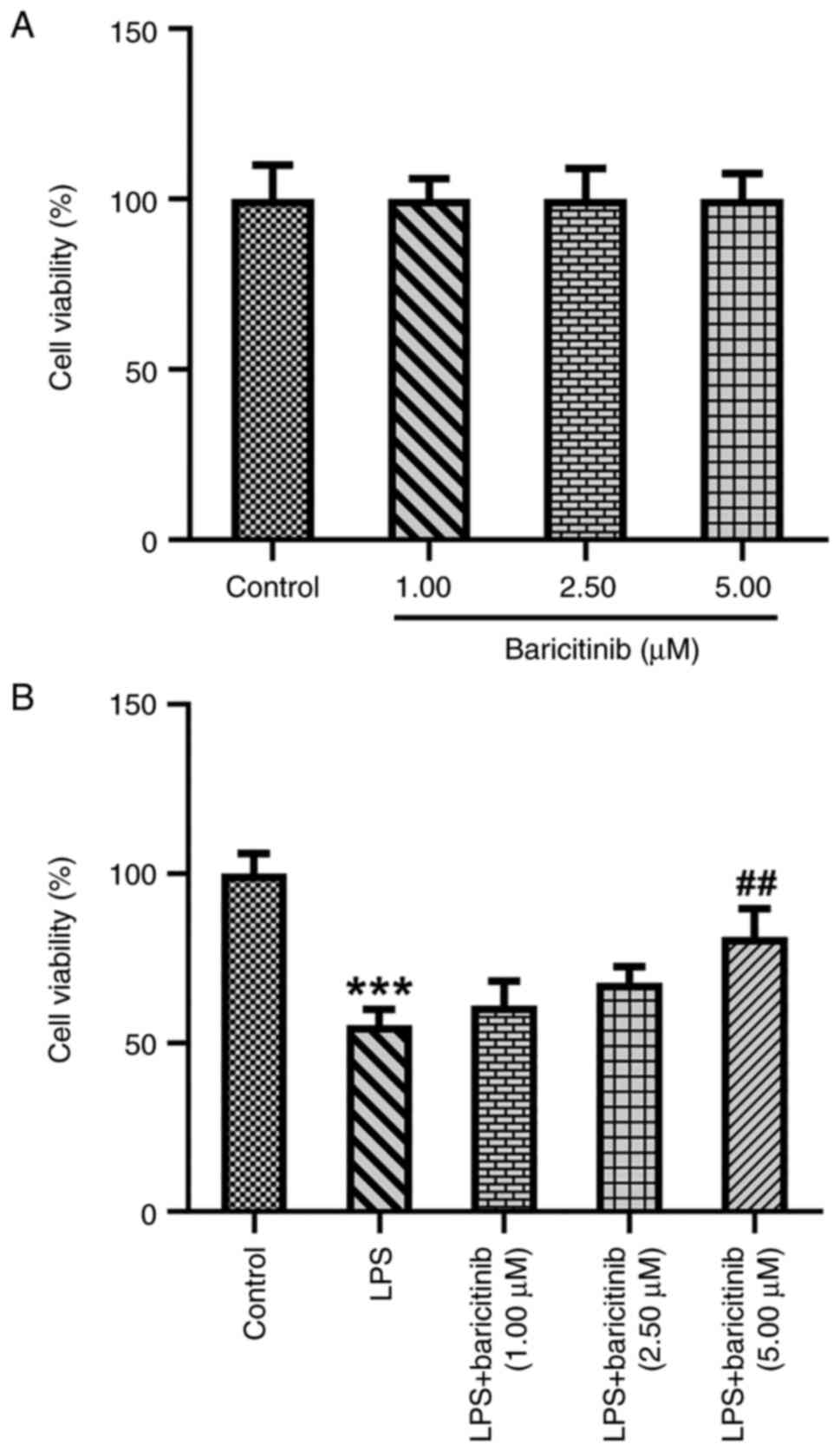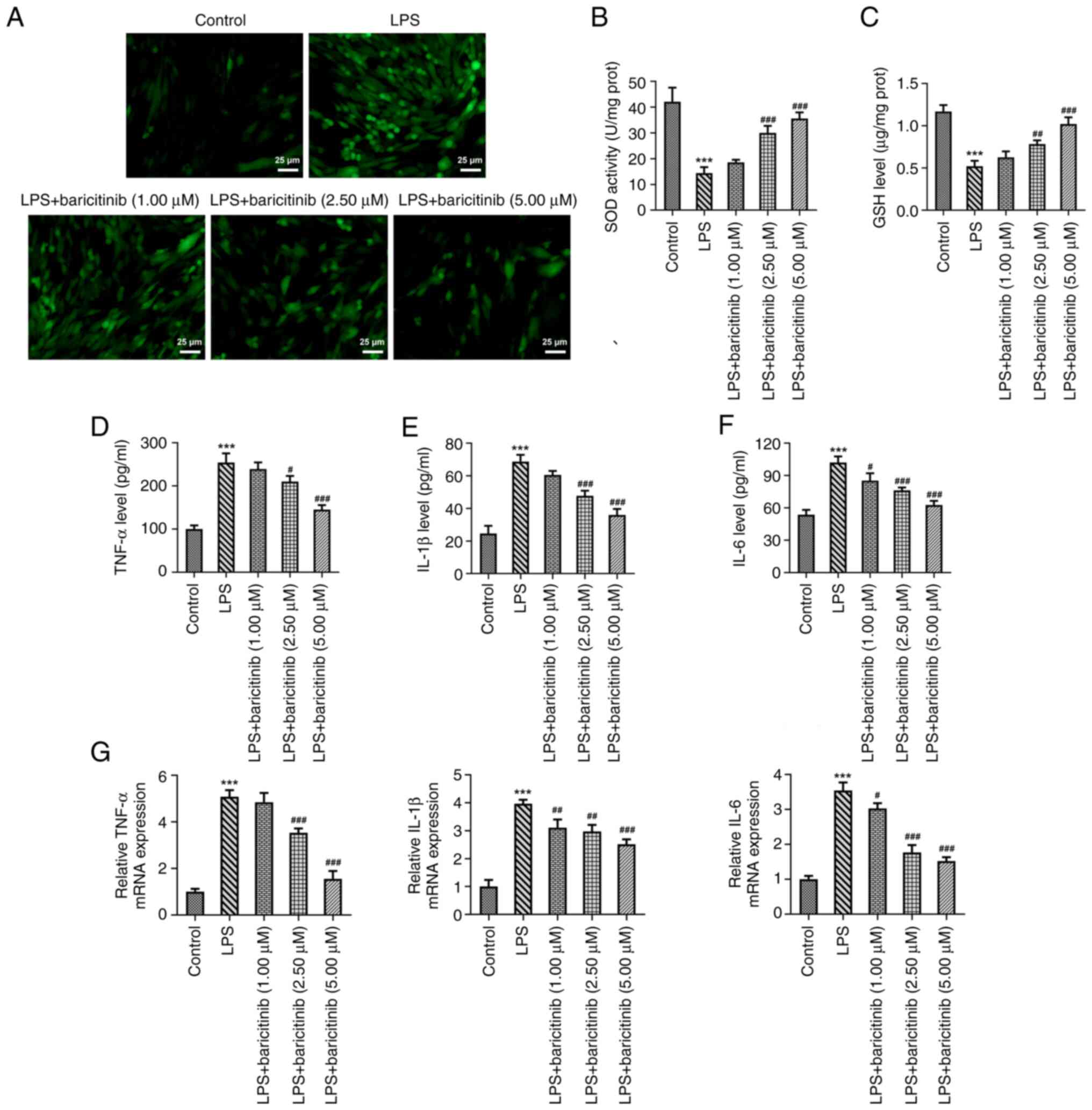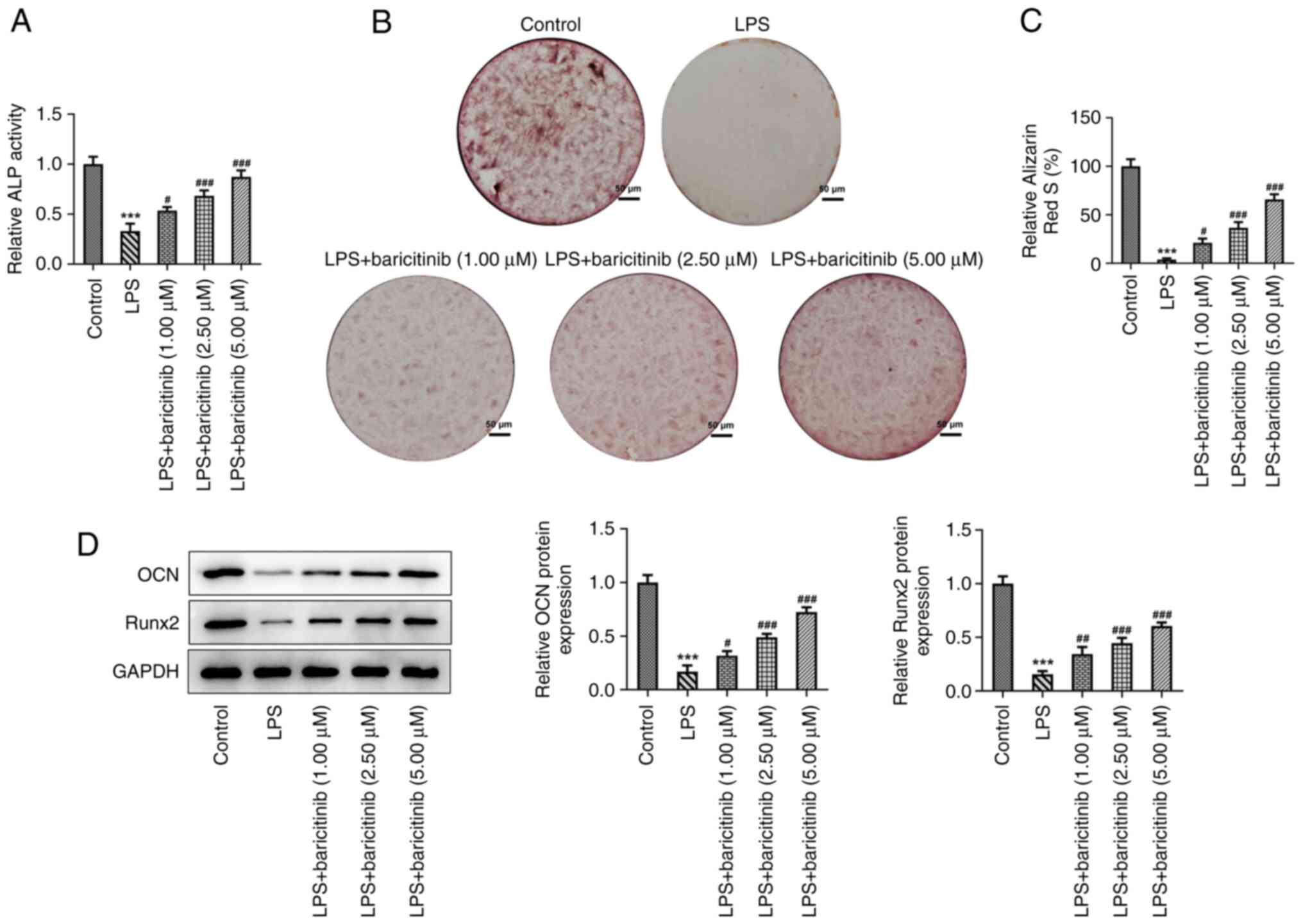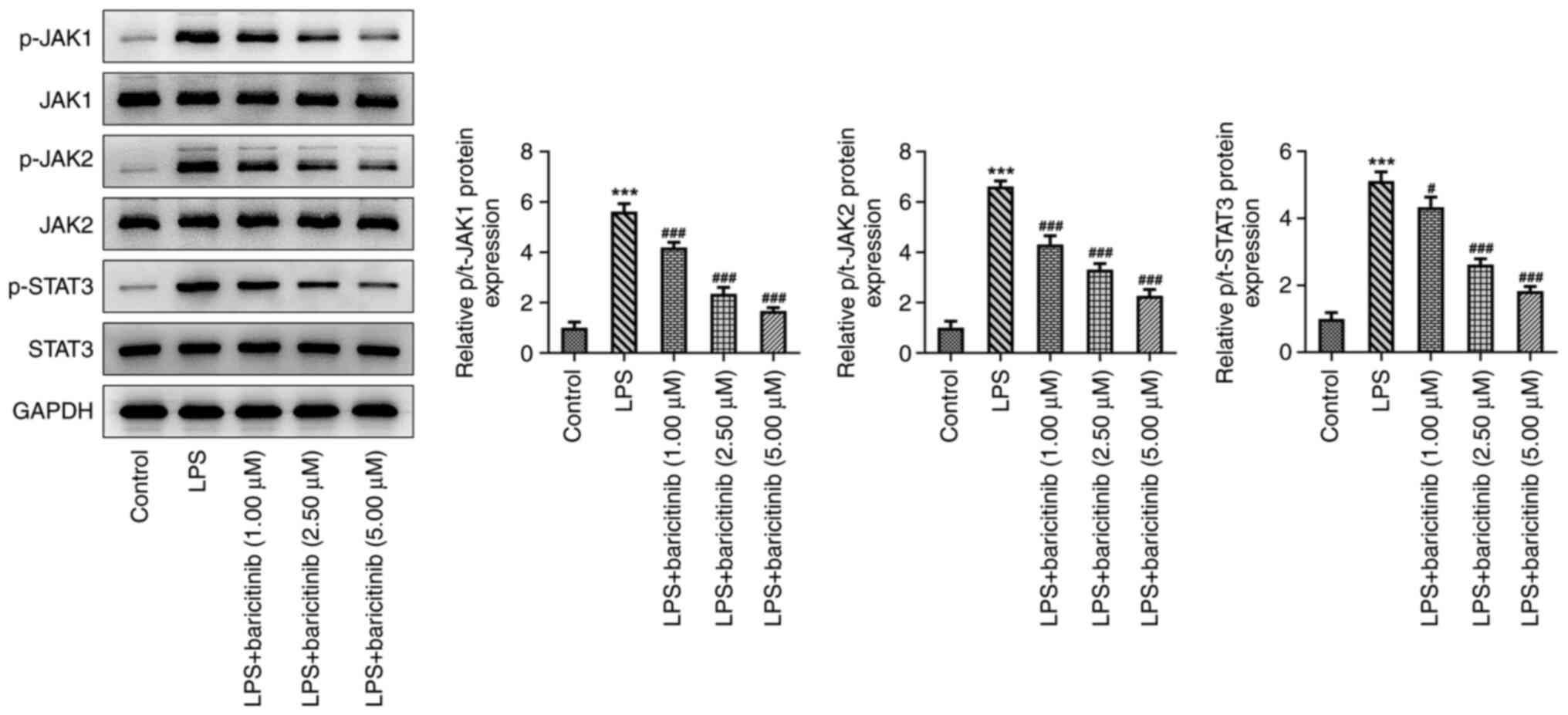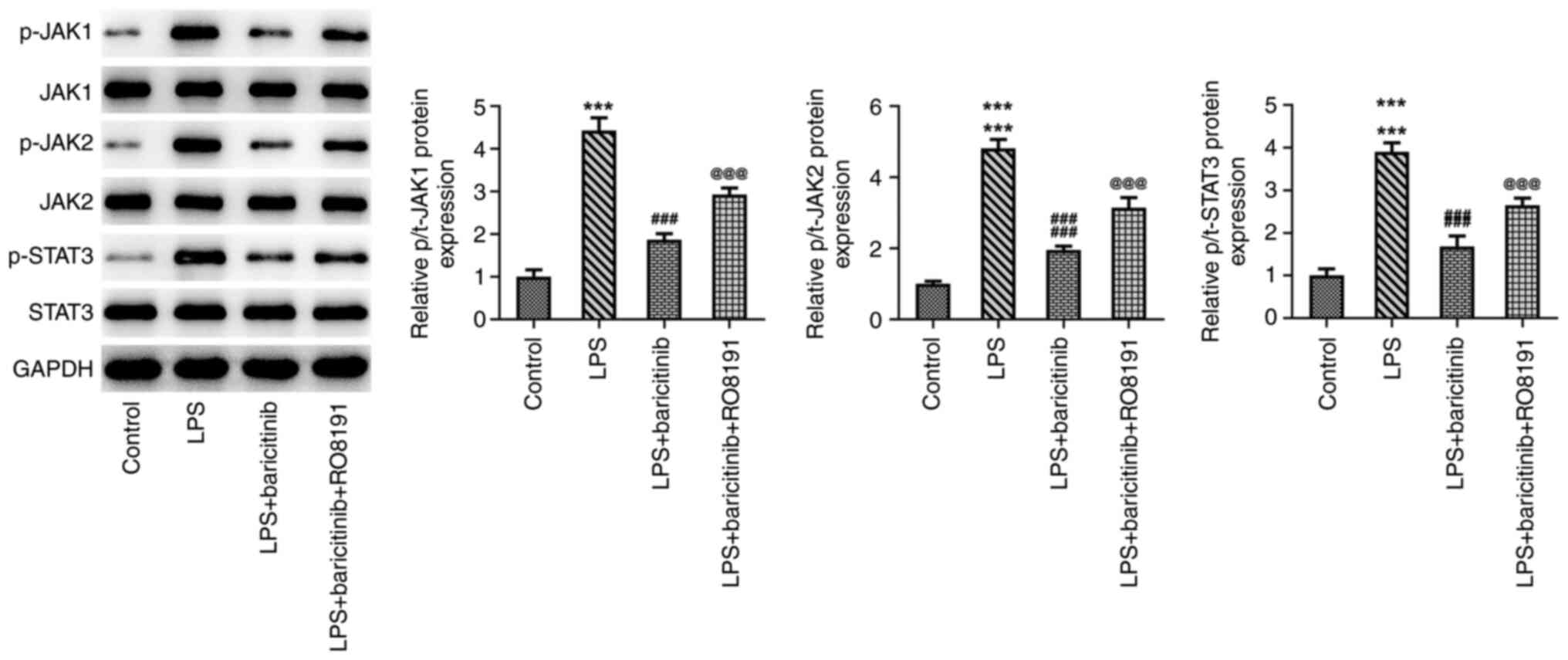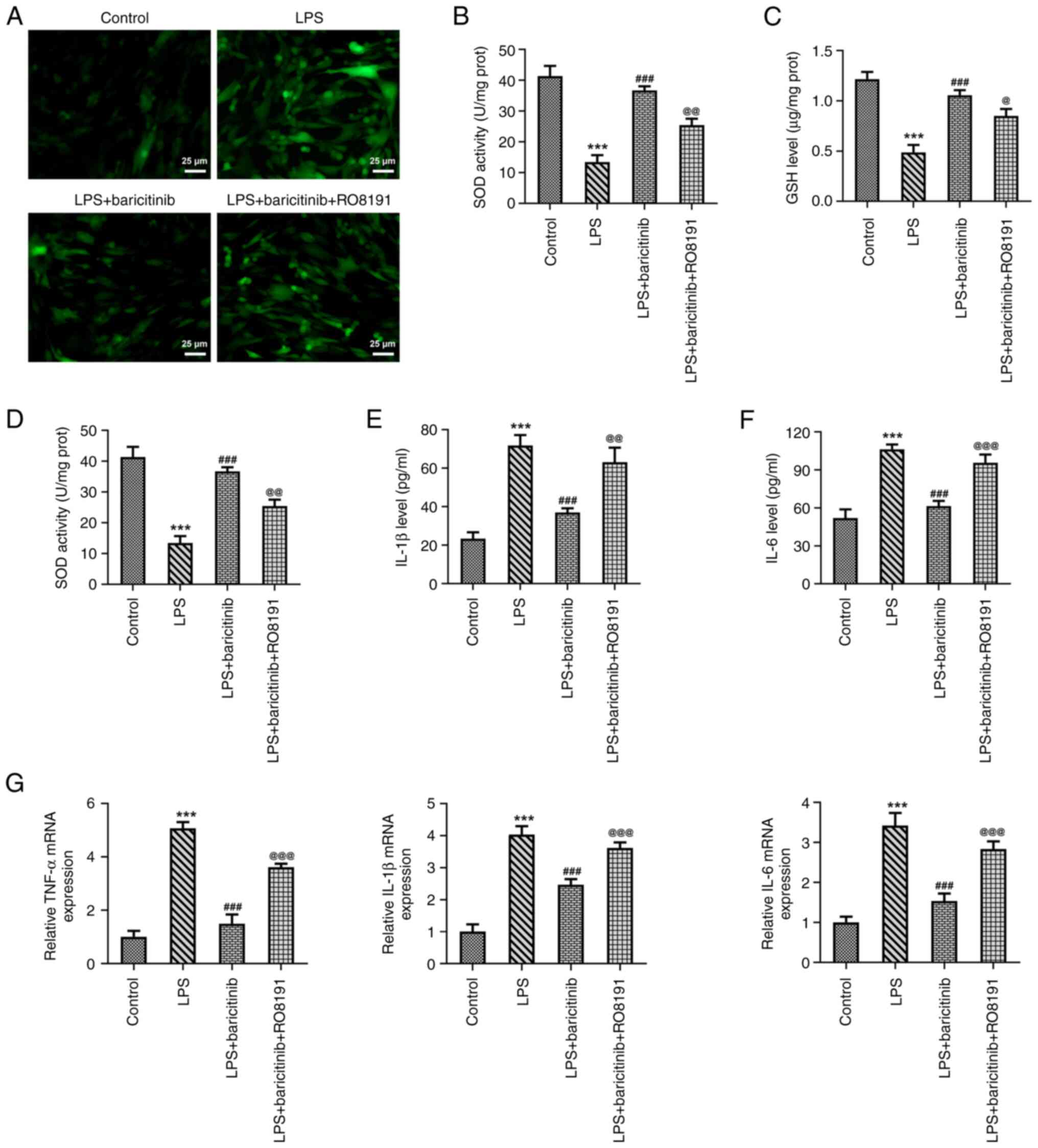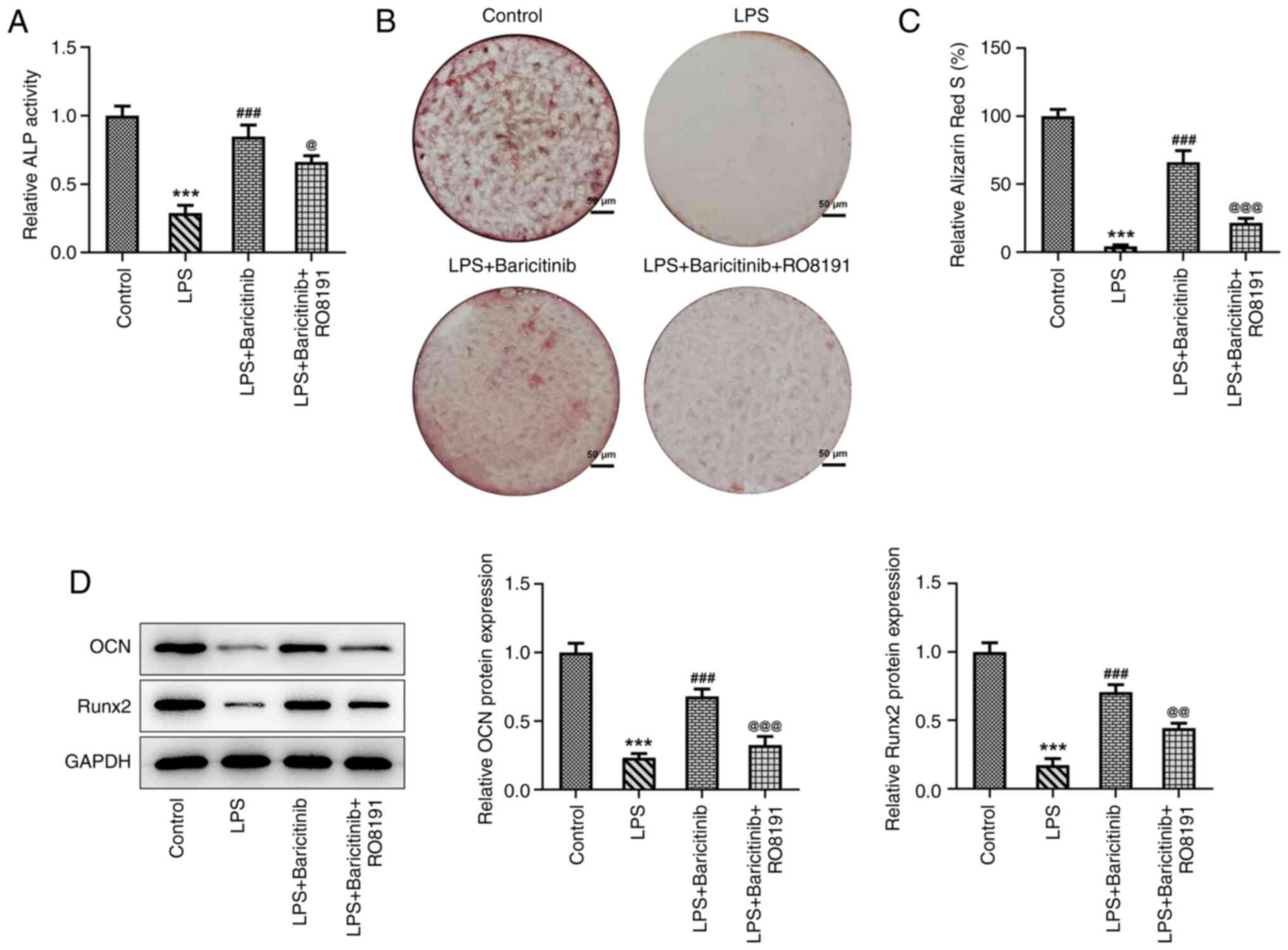|
1
|
Chen MX, Zhong YJ, Dong QQ, Wong HM and
Wen YF: Global, regional, and national burden of severe
periodontitis, 1990-2019: An analysis of the global burden of
disease study 2019. J Clin Periodontol. 48:1165–1188.
2021.PubMed/NCBI View Article : Google Scholar
|
|
2
|
Socransky SS, Haffajee AD, Cugini MA,
Smith C and Kent RL Jr: Microbial complexes in subgingival plaque.
J Clin Periodontol. 25:134–144. 1998.PubMed/NCBI View Article : Google Scholar
|
|
3
|
Byrne SJ, Dashper SG, Darby IB, Adams GG,
Hoffmann B and Reynolds EC: Progression of chronic periodontitis
can be predicted by the levels of Porphyromonas gingivalis and
Treponema denticola in subgingival plaque. Oral Microbiol Immunol.
24:469–477. 2009.PubMed/NCBI View Article : Google Scholar
|
|
4
|
Papapanou PN, Sanz M, Buduneli N, Dietrich
T, Feres M, Fine DH, Flemmig TF, Garcia R, Giannobile WV, Graziani
F, et al: Periodontitis: Consensus report of workgroup 2 of the
2017 world workshop on the classification of periodontal and
peri-implant diseases and conditions. J Periodontol. 89 (Suppl
1):S173–S182. 2018.PubMed/NCBI View Article : Google Scholar
|
|
5
|
Hajishengallis G: Periodontitis: From
microbial immune subversion to systemic inflammation. Nat Rev
Immunol. 15:30–44. 2015.PubMed/NCBI View
Article : Google Scholar
|
|
6
|
Polak D and Shapira L: An update on the
evidence for pathogenic mechanisms that may link periodontitis and
diabetes. J Clin Periodontol. 45:150–166. 2018.PubMed/NCBI View Article : Google Scholar
|
|
7
|
Wallace K, Shafique S and Piamjariyakul U:
The relationship between oral health and hemodialysis treatment
among adults with chronic kidney disease: A systematic review.
Nephrol Nurs J. 46:375–394. 2019.PubMed/NCBI
|
|
8
|
Khumaedi AI, Purnamasari D, Wijaya IP and
Soeroso Y: The relationship of diabetes, periodontitis and
cardiovascular disease. Diabetes Metab Syndr. 13:1675–1678.
2019.PubMed/NCBI View Article : Google Scholar
|
|
9
|
Trikka D and Vassilopoulos S: Periodontal
regeneration with enamel matrix derivative in the management of
generalized aggressive periodontitis: A case report with 11-year
follow-up and literature review. J Int Soc Prev Community Dent.
9:13–20. 2019.PubMed/NCBI View Article : Google Scholar
|
|
10
|
Bella P and Istvan G: The comprehensive
periodontal, resorative end prosthodontic therapy of chronic
periodontitis case presentation. Fogorv Sz. 109:125–135.
2016.PubMed/NCBI(In English, Hungarian).
|
|
11
|
Ashouri Moghaddam A, Radafshar G,
Jahandideh Y and Kakaei N: Clinical evaluation of effects of local
application of aloe vera gel as an adjunct to scaling and root
planning in patients with chronic periodontitis. J Dent (Shiraz).
18:165–172. 2017.PubMed/NCBI
|
|
12
|
Seo BM, Miura M, Gronthos S, Bartold PM,
Batouli S, Brahim J, Young M, Robey PG, Wang CY and Shi S:
Investigation of multipotent postnatal stem cells from human
periodontal ligament. Lancet. 364:149–155. 2004.PubMed/NCBI View Article : Google Scholar
|
|
13
|
Aydin S and Şahin F: Stem cells derived
from dental tissues. Adv Exp Med Biol. 1144:123–132.
2019.PubMed/NCBI View Article : Google Scholar
|
|
14
|
Liu Y, Zheng Y, Ding G, Fang D, Zhang C,
Bartold PM, Gronthos S, Shi S and Wang S: Periodontal ligament stem
cell-mediated treatment for periodontitis in miniature swine. Stem
Cells. 26:1065–1073. 2008.PubMed/NCBI View Article : Google Scholar
|
|
15
|
Nagata M, Iwasaki K, Akazawa K, Komaki M,
Yokoyama N, Izumi Y and Morita I: Conditioned medium from
periodontal ligament stem cells enhances periodontal regeneration.
Tissue Eng Part A. 23:367–377. 2017.PubMed/NCBI View Article : Google Scholar
|
|
16
|
Diomede F, D'Aurora M, Gugliandolo A,
Merciaro I, Ettorre V, Bramanti A, Piattelli A, Gatta V, Mazzon E,
Fontana A and Trubiani O: A novel role in skeletal segment
regeneration of extracellular vesicles released from
periodontal-ligament stem cells. Int J Nanomed. 13:3805–3825.
2018.PubMed/NCBI View Article : Google Scholar
|
|
17
|
Trubiani O, Marconi GD, Pierdomenico SD,
Piattelli A, Diomede F and Pizzicannella J: Human oral stem cells,
biomaterials and extracellular vesicles: A promising tool in bone
tissue repair. Int J Mol Sci. 20(4987)2019.PubMed/NCBI View Article : Google Scholar
|
|
18
|
Ramenzoni LL, Russo G, Moccia MD, Attin T
and Schmidlin PR: Periodontal bacterial supernatants modify
differentiation, migration and inflammatory cytokine expression in
human periodontal ligament stem cells. PLoS One.
14(e0219181)2019.PubMed/NCBI View Article : Google Scholar
|
|
19
|
Cheng M and Zhou Q: Targeting EZH2
ameliorates the LPS-inhibited PDLSC osteogenesis via Wnt/β-catenin
pathway. Cells Tissues Organs. 209:227–235. 2020.PubMed/NCBI View Article : Google Scholar
|
|
20
|
Wang W, Yuan C, Geng T, Liu Y, Zhu S,
Zhang C, Liu Z and Wang P: Lipopolysaccharide inhibits osteogenic
differentiation of periodontal ligament stem cells partially
through toll-like receptor 4-mediated ephrinB2 downregulation. Clin
Oral Investig. 24:3407–3416. 2020.PubMed/NCBI View Article : Google Scholar
|
|
21
|
Fu Z, Wang X, Li B and Tang Y:
Fraxinellone alleviates inflammation and promotes osteogenic
differentiation in lipopolysaccharide-stimulated periodontal
ligament stem cells by regulating the bone morphogenetic protein
2/Smad pathway. Arch Oral Biol. 121(104927)2021.PubMed/NCBI View Article : Google Scholar
|
|
22
|
Honda S and Harigai M: The safety of
baricitinib in patients with rheumatoid arthritis. Expert Opin Drug
Saf. 19:545–551. 2020.PubMed/NCBI View Article : Google Scholar
|
|
23
|
Ancuța C, Pomîrleanu C, Mihailov C,
Chirieac R, Ancuța E, Iordache C, Bran C and Țănculescu O: Efficacy
of baricitinib on periodontal inflammation in patients with
rheumatoid arthritis. Joint Bone Spine. 87:235–239. 2020.PubMed/NCBI View Article : Google Scholar
|
|
24
|
Murakami K, Kobayashi Y, Uehara S, Suzuki
T, Koide M, Yamashita T, Nakamura M, Takahashi N, Kato H, Udagawa N
and Nakamura Y: A Jak1/2 inhibitor, baricitinib, inhibits
osteoclastogenesis by suppressing RANKL expression in osteoblasts
in vitro. PLoS One. 12(e0181126)2017.PubMed/NCBI View Article : Google Scholar
|
|
25
|
Adam S, Simon N, Steffen U, Andes FT,
Scholtysek C, Müller DIH, Weidner D, Andreev D, Kleyer A, Culemann
S, et al: JAK inhibition increases bone mass in steady-state
conditions and ameliorates pathological bone loss by stimulating
osteoblast function. Sci Transl Med. 12(eaay4447)2020.PubMed/NCBI View Article : Google Scholar
|
|
26
|
Zheng XY, Mao CY, Qiao H, Zhang X, Yu L,
Wang TY and Lu EY: Plumbagin suppresses chronic periodontitis in
rats via down-regulation of TNF-α, IL-1β and IL-6 expression. Acta
Pharmacol Sin. 38:1150–1160. 2017.PubMed/NCBI View Article : Google Scholar
|
|
27
|
Shao Q, Liu S, Zou C and Ai Y: Effect of
LSD1 on osteogenic differentiation of human periodontal ligament
stem cells in periodontitis. Oral Dis: Nov 5, 2021 (Epub ahead of
print).
|
|
28
|
Zheng X, Zhu Y, Wang X, Hou Y and Fang Y:
Silencing of ITGB6 inhibits the progression of cervical carcinoma
via regulating JAK/STAT3 signaling pathway. Ann Transl Med.
9(803)2021.PubMed/NCBI View Article : Google Scholar
|
|
29
|
Eruslanov E and Kusmartsev S:
Identification of ROS using oxidized DCFDA and flow-cytometry.
Methods Mol Biol. 594:57–72. 2010.PubMed/NCBI View Article : Google Scholar
|
|
30
|
Livak KJ and Schmittgen TD: Analysis of
relative gene expression data using real-time quantitative PCR and
the 2(-Delta Delta C(T)) method. Methods. 25:402–408.
2001.PubMed/NCBI View Article : Google Scholar
|
|
31
|
Sanz M, Marco Del Castillo A, Jepsen S,
Gonzalez-Juanatey JR, D'Aiuto F, Bouchard P, Chapple I, Dietrich T,
Gotsman I, Graziani F, et al: Periodontitis and cardiovascular
diseases: Consensus report. J Clin Periodontol. 47:268–288.
2020.PubMed/NCBI View Article : Google Scholar
|
|
32
|
Lundmark A, Hu YOO, Huss M, Johannsen G,
Andersson AF and Yucel-Lindberg T: Identification of salivary
microbiota and its association with host inflammatory mediators in
periodontitis. Front Cell Infect Microbiol. 9(216)2019.PubMed/NCBI View Article : Google Scholar
|
|
33
|
Menicanin D, Mrozik KM, Wada N, Marino V,
Shi S, Bartold PM and Gronthos S: Periodontal-ligament-derived stem
cells exhibit the capacity for long-term survival, self-renewal,
and regeneration of multiple tissue types in vivo. Stem Cells Dev.
23:1001–1011. 2014.PubMed/NCBI View Article : Google Scholar
|
|
34
|
Li L, Liu W, Wang H, Yang Q, Zhang L, Jin
F and Jin Y: Mutual inhibition between HDAC9 and miR-17 regulates
osteogenesis of human periodontal ligament stem cells in
inflammatory conditions. Cell Death Dis. 9(480)2018.PubMed/NCBI View Article : Google Scholar
|
|
35
|
Shirasugi M, Nakagawa M, Nishioka K,
Yamamoto T, Nakaya T and Kanamura N: Relationship between
periodontal disease and butyric acid produced by periodontopathic
bacteria. Inflamm Regen. 38(23)2018.PubMed/NCBI View Article : Google Scholar
|
|
36
|
Hoare A, Soto C, Rojas-Celis V and Bravo
D: Chronic inflammation as a link between periodontitis and
carcinogenesis. Mediators Inflamm. 2019(1029857)2019.PubMed/NCBI View Article : Google Scholar
|
|
37
|
Zhao B, Zhang W, Xiong Y, Zhang Y, Zhang D
and Xu X: Effects of rutin on the oxidative stress, proliferation
and osteogenic differentiation of periodontal ligament stem cells
in LPS-induced inflammatory environment and the underlying
mechanism. J Mol Histol. 51:161–171. 2020.PubMed/NCBI View Article : Google Scholar
|
|
38
|
Duan Y, An W, Wu H and Wu Y: Salvianolic
acid C attenuates LPS-induced inflammation and apoptosis in human
periodontal ligament stem cells via toll-like receptors 4
(TLR4)/nuclear factor kappa B (NF-κB) pathway. Med Sci Monit.
25:9499–9508. 2019.PubMed/NCBI View Article : Google Scholar
|
|
39
|
Smolen JS, Genovese MC, Takeuchi T, Hyslop
DL, Macias WL, Rooney T, Chen L, Dickson CL, Riddle Camp J,
Cardillo TE, et al: Safety profile of baricitinib in patients with
active rheumatoid arthritis with over 2 years median time in
treatment. J Rheumatol. 46:7–18. 2019.PubMed/NCBI View Article : Google Scholar
|
|
40
|
Sanchez GAM, Reinhardt A, Ramsey S,
Wittkowski H, Hashkes PJ, Berkun Y, Schalm S, Murias S, Dare JA,
Brown D, et al: JAK1/2 inhibition with baricitinib in the treatment
of autoinflammatory interferonopathies. J Clin Invest.
128:3041–3052. 2018.PubMed/NCBI View Article : Google Scholar
|
|
41
|
Bhaskarmurthy DH and Prince SE: Effect of
baricitinib on TPA-induced psoriasis like skin inflammation. Life
Sci. 279(119655)2021.PubMed/NCBI View Article : Google Scholar
|
|
42
|
Douglas TEL, Vandrovcová M, Kročilová N,
Keppler JK, Zárubová J, Skirtach AG and Bačáková L: Application of
whey protein isolate in bone regeneration: Effects on growth and
osteogenic differentiation of bone-forming cells. J Dairy Sci.
101:28–36. 2018.PubMed/NCBI View Article : Google Scholar
|
|
43
|
Jiang B, Xu J, Zhou Y, Mao J, Guan G, Xu X
and Mei L: Estrogen enhances osteogenic differentiation of human
periodontal ligament stem cells by activating the Wnt/β-catenin
signaling pathway. J Craniofac Surg. 31:583–587. 2020.PubMed/NCBI View Article : Google Scholar
|
|
44
|
Yu M, Wang L, Ba P, Li L, Sun L, Duan X,
Yang P, Yang C and Sun Q: Osteoblast progenitors enhance osteogenic
differentiation of periodontal ligament stem cells. J Periodontol.
88:e159–e168. 2017.PubMed/NCBI View Article : Google Scholar
|
|
45
|
Sun H, Feng K, Hu J, Soker S, Atala A and
Ma PX: Osteogenic differentiation of human amniotic fluid-derived
stem cells induced by bone morphogenetic protein-7 and enhanced by
nanofibrous scaffolds. Biomaterials. 31:1133–1139. 2010.PubMed/NCBI View Article : Google Scholar
|
|
46
|
Deng Y, Wu S, Zhou H, Bi X, Wang Y, Hu Y,
Gu P and Fan X: Effects of a miR-31, Runx2, and Satb2 regulatory
loop on the osteogenic differentiation of bone mesenchymal stem
cells. Stem Cells Dev. 22:2278–2286. 2013.PubMed/NCBI View Article : Google Scholar
|
|
47
|
Li J, Li L, Wang X and Xiao L:
Porphyromonas gingivalis inhibition of MicroRNA-205-5p expression
modulates proinflammatory cytokines in gingival epithelial cells.
Biochem Genet. 58:566–579. 2020.PubMed/NCBI View Article : Google Scholar
|
|
48
|
Wang Q, Li H, Xie H, Fu M, Guo B, Ding Y,
Li W and Yu H: 25-Hydroxyvitamin D3 attenuates experimental
periodontitis through downregulation of TLR4 and JAK1/STAT3
signaling in diabetic mice. J Steroid Biochem Mol Biol. 135:43–50.
2013.PubMed/NCBI View Article : Google Scholar
|















